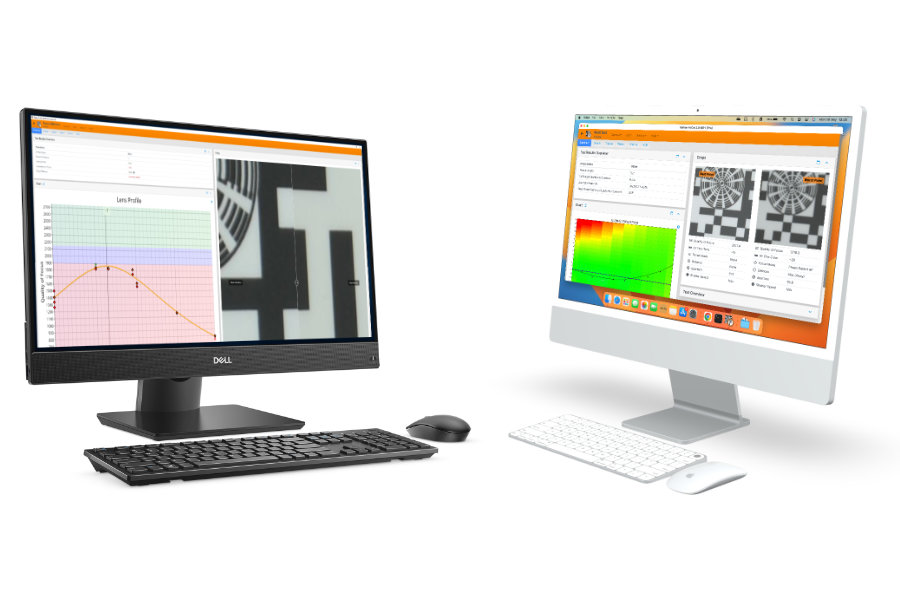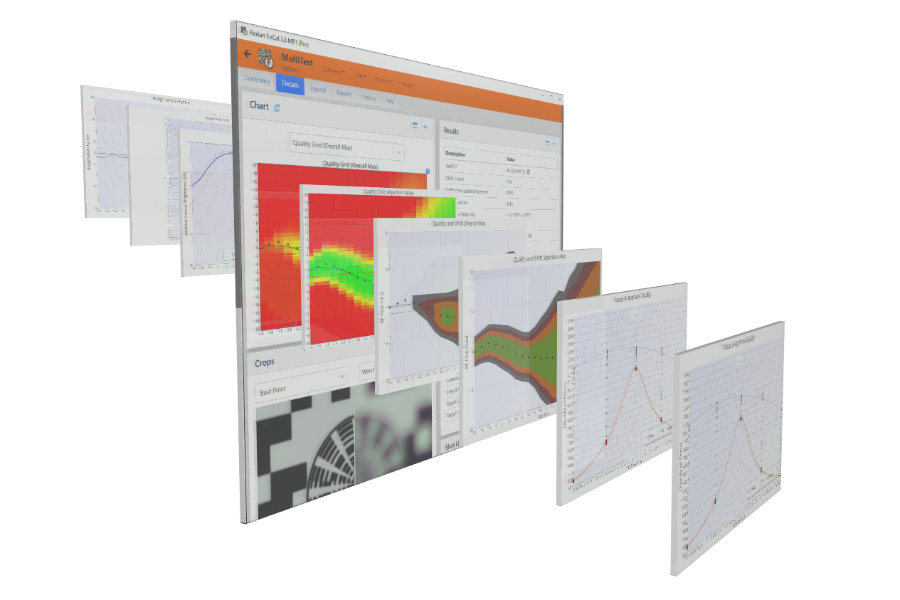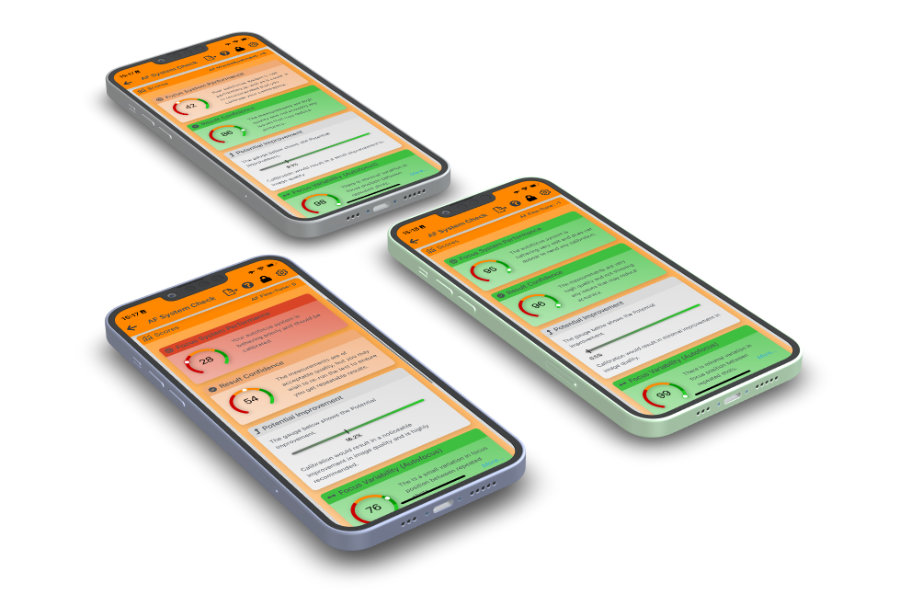FoCal Support for the Ricoh GR III
Supported Features
Focus Calibration is unavailable for this camera
This camera does not support any form of focus adjustment.
Calibration Check is unavailable for this camera
This camera cannot be controlled by FoCal, which is required for this test.
MultiTest is unavailable for this camera
This camera cannot be controlled by FoCal, which is required for this test.
Stabilisation Test is unavailable for this camera
This camera cannot be controlled by FoCal, which is required for this test.
Focus Consistency is available for this camera.
With the Focus Consistency tool, you can investigate how repeatable your Ricoh GR III autofocus system is. Choose to defocus between shots in one or both directions, and compare viewfinder (phase-detect) and Live View focusing.
Aperture Sharpness is available for this camera.
What happens to your image sharpness as you change aperture on your lens? With the Aperture Sharpness tool in FoCal, you can find out!
Dust Analysis is available for this camera.
Take a good look at your Ricoh GR III sensor with the Dust Analysis tool. Quantify the dust spots - see how many there are and how much of an impact they will really have on your sensor before you decide to embark on a costly and potentially risky clean.
The Snapshots feature is unavailable for this camera
This feature is not yet available for this camera.
Using FoCal with your Ricoh GR III
Click a heading below for further information.
Connecting to your computer or mobile device
This camera cannot currently be controlled by FoCal.
You can run selected tests in File Mode, where you capture a series of files manually and FoCal will perform the analysis. See the Supported Features section for more information.
Environment Setup
Choose a location with a solid floor
Ground floor locations are less likely to vibrate when people move, trucks drive past outside the building etc. The quality of your test results will be affected if there is vibration to the camera/lens during the test.
Attach the target firmly to a vertical wall at approximately the height of the camera lens
If you print the target yourself, make sure it is flat and cannot blow around during testing. We recommend using a FoCal Hard Target (available from the Reikan FoCal Store) as these are the targets we use for all our development and testing.
Ensure the target is well lit with a stable light source
We don’t recommend the use of fluorescent or LED lighting as they can flicker – you won’t be able to see this with your eye, but the camera can be affected and the results may not be as accurate as possible. Also avoid changeable outdoor lighting - e.g. clouds moving across the sky. FoCal can compensate for small light level changes, but large changes can cause problems during testing.
Attach the camera or lens to a solid, sturdy tripod
If the option is available for your tripod, you can hang something heavy from the hook at the base of the centre column to further stabilise the camera lens during testing.
For large lenses, use the supplied tripod collar and attach the lens to the tripod (not the camera) - this will not only reduce strain on the camera mount, but also make the whole camera/lens system more stable.
Position the camera the appropriate distance from the target
The Target Distance Tool in FoCal will guide you. You can use this either with or without the camera connected to FoCal. More information is available at help.reikanfocal.com/targetdistance.
Camera Setup
Check the camera battery is at least half (>50%) charged
Low batteries can cause the tests to run incorrectly or to fail. FoCal can catch and properly identify most issues, but if a battery is low or exhausted the camera may behave unexpectedly and you may see strange behavior.
Remove any battery grip from the camera
Battery grips can cause considerable extra vibration when mounted on a tripod - remove them before you calibrate.
Aim the centre focus point of the camera approximately at the centre of the FoCal Target
You don't have to be too precise - positioning will be confirmed during Target Setup.
Camera Settings
Switch to Photo mode (if applicable)
If your camera can operate in both Photo and Video mode. If there is a selector switch, ensure that it is switched to Photo mode.
Remove any mode limits
Some cameras allow you to limit available options for various settings. If this is possible on your camera, please ensure that the following are allowed options:
- AE Mode: Aperture Priority and Manual
- Metering Mode: Spot Metering, Matrix/Evaluative Metering
- Aperture: All apertures
- Shutter Speed: All shutter speeds
- ISO: All ISO values
Switch to Aperture Priority Mode
Most tests in FoCal use Aperture Priority mode, so it's a good idea to switch to this mode when you start.
If a tool in FoCal requires a different mode, you will be asked to change.
Select non-continuous Autofocus mode
Ensure the autofocus mode of your Ricoh GR III is set to .
To check, when you half-press the shutter button, the camera should lock focus (with a beep if this is enabled), and then stop focusing.
Select single focus point mode
You should not use any automatic focus point selection modes. When you look through the viewfinder and activate autofocus (half-press the shutter button or use the AF-ON button), you should see only a single, non-moving AF point selected.
Choose the Centre focus point
Most FoCal tests require use of just the centre focus point, so set that single point (from the step above) to the centre.
Ensure Focus Limiter is disabled on lens (if applicable)
FoCal may use the whole of the lens focus range during testing. You may encounter errors if the range of focus is limited on the lens, so make sure the limiter is set to OFF or the minimum-to-maximum range (note this option is not present on all lenses - it's usually available on longer telephoto lenses or macro lenses).
Ensure any image stabilisation is disabled on lens and/or in-camera (if applicable)
You should disable any image-stabilisation option on your lens, as it can reduce the quality of the results.
Ricoh GR III Specifications
| Camera Model | GR III |
| Manufacturer | Ricoh |
| Diffraction Limited Aperture | f/6 |
| Sensor Size | APS C: 23.5 x 15.6 mm (366.6 mm²) |
| Sensor Resolution | 6000 x 4000 pixels (24.0 MP) |
| Pixel Size | 3.9µm |
| Sensor Type | Bayer |
| Base ISO | 100 |
| CPU Type | |
| In-body Stabilisation | No |
FoCal Products
Find out more about our suite of camera & lens tools

 Automatic Focus Calibration
Automatic Focus Calibration Calibration check
Calibration check  MultiTest
MultiTest Stabilisation Test
Stabilisation Test Focus Consistency
Focus Consistency Aperture Sharpness
Aperture Sharpness Dust Analysis
Dust Analysis

